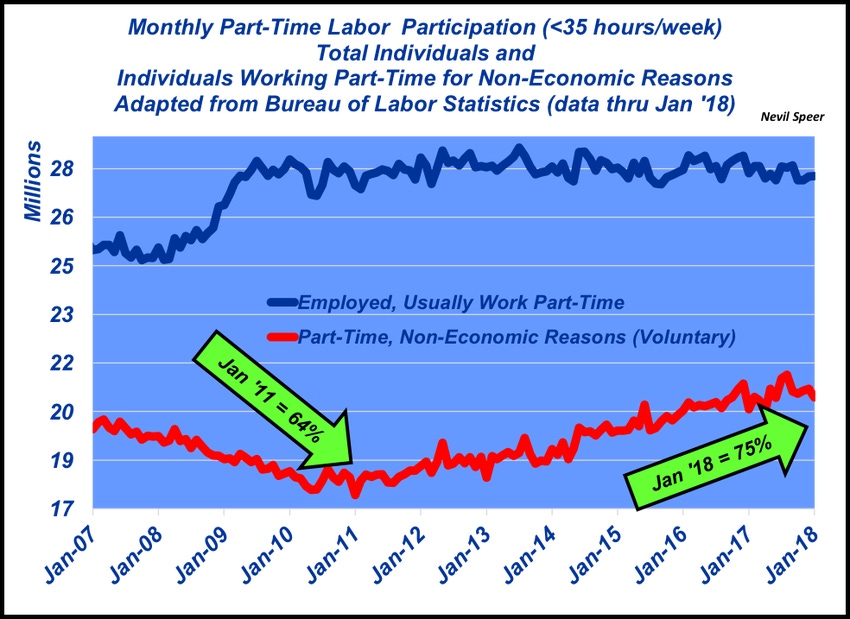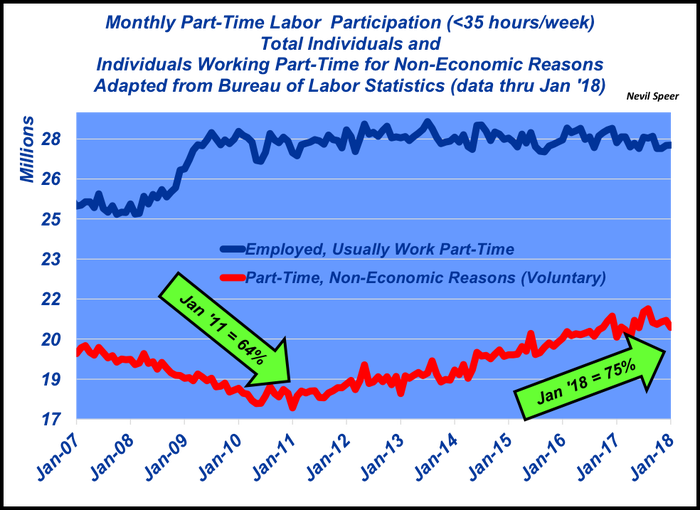Part-time labor and rural America
More people are working part-time now, and some of them by choice. Are they coming from rural America?
March 2, 2018

The Bureau of Labor Statistics will release its next Employment Situation report, otherwise known as the “jobs report,” on Friday, March 9. Economists are monitoring these monthly reports especially carefully in 2018, given that market participants are basically expecting three interest rate hikes this year by the Federal Open Market Committee (FOMC). However, if employment and/or wage pressure remains strong, there is a possibility the FOMC opts for additional adjustments beyond the conventional guesstimate.
Accordingly, each jobs report plays an important role in dictating the overall tone going into each FOMC meeting. There are lots of reaction and discussion that occur following each report. However, equally interesting and important are some of the longer-term trends that are occurring around the labor market.
Perhaps the most interesting and fundamental shift that’s occurred in the past five to 10 years revolves around part-time workers. Not surprisingly, part-time labor jumped dramatically in the midst of the financial crisis. The number of workers employed on a part-time basis basically jumped from 25 million to 28 million as we progressed through the recession. And much of that was the result of involuntary choices; that is, workers had no other options other than to work part time.

Since that time, the total number of part-time workers has remained relatively stable around 28 million. But since 2011 there’s been a constant increase in the proportion of individuals working part-time on a voluntary basis. In other words, more people who are working part-time are doing so by choice, versus not being able to find full-time work.
That’s an important dynamic for the labor market. More important, though, is the influence of that opportunity for rural America. Part-time work is a fundamental contributor to allowing individuals and/or families to maintaining their farming or ranching operation. We’ll be able to know more when we can tease this information out of the 2017 Census of Agriculture.
What’s your assessment of this trend? Do you expect that part of the increase of voluntary part-time workers is a high proportion of people tied to farming and/or ranching operations to generate extra income? What do you see happening around part-time work in your area? Leave your thoughts in the comments section below.
Nevil Speer is based in Bowling Green, Ky., and serves as vice president of U.S. operations for AgriClear, Inc. – a wholly-owned subsidiary of TMX Group Limited. The views and opinions of the author expressed herein do not necessarily state or reflect those of the TMX Group Limited.
About the Author(s)
You May Also Like




.png?width=300&auto=webp&quality=80&disable=upscale)
